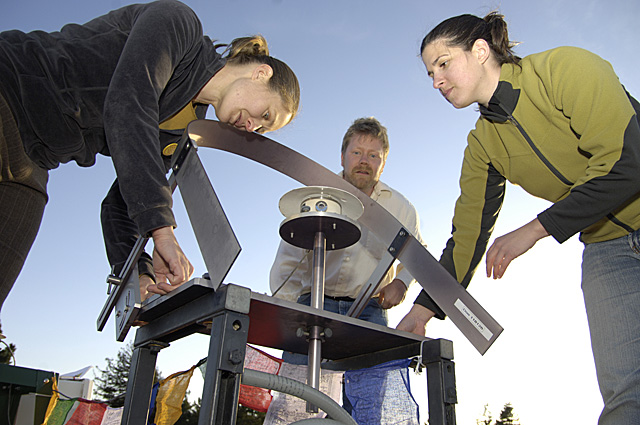
The station is located atop the HSU Library roof and will serve as a primary station of the U.S. Department of Energys National Renewable Energy Laboratory (NREL), in Golden, CO.
Through the approximately $5,000 SoRMS project, HSU students belonging to the Renewable Energy Student Union will contribute directly to the national effort to characterize Americas solar energy resource, under the auspices of the laboratory.
Likewise, the monitoring station represents an important regional contribution as solar energy gains an expanding share of the North Coast's energy mix. The HSU monitoring data will be used to support efforts to expand the application of clean and renewable solar technologies.
The Renewable Energy Student Union (RESU) is dedicated to clean, renewable energy and to HSU's long-held precept of hands-on learning. RESU members designed and built the station, secured grant funding and donations to acquire the necessary equipment, and developed the station in coordination with NREL. The group obtained contributions, not only from the national lab, but also from the HSU Sponsored Programs Foundation and the Redwood Alliance.
Further support was provided by HSU's internationally-recognized Schatz Energy Research Center, the schools Department of Environmental Resources Engineering, Dr. Eileen Cashman of that department, faculty advisor Dr. Arne Jacobson and Marty Reed, equipment technician, HSU Biological Sciences.
The projects primary instruments are two Eppeley brand Precision Spectral Pyranometers, which measure the intensity of solar radiation. One is configured to measure overall intensity on a horizontal surface; the other is fitted with a shadow band to collect only the diffuse (or scattered) component of the solar radiation. Combined, the two measurements enable complete characterization of the solar resource. A logger records the data and they will be available to the public at www.humboldt.edu/~resu/, the RESU web site. For details, call Dr. Arne Jacobson at 707/826-3184.